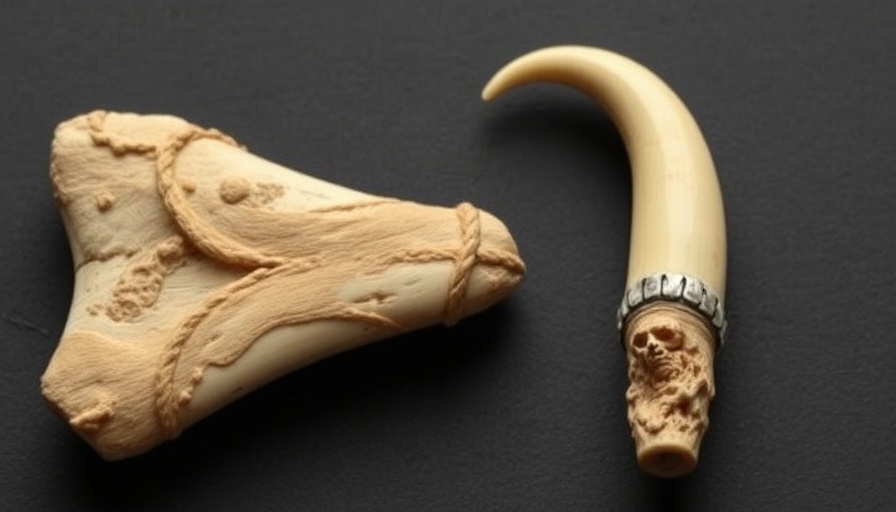
Mystifying Fragments: The Oldest Human-Made Ivory Objects?
In a groundbreaking discovery from Ukraine, archaeologists have unearthed fascinating artifacts dating back 400,000 years, believed to be the oldest known human-made ivory objects. Found at the Lower Paleolithic site known as Medzhibozh A, these fragments made from mammoth tusks provide a glimpse into the technological and cultural practices of early humans.
Discovering the Ancient Artifacts in Ukraine
During excavations in the Southern Bug Valley, researchers discovered 24 fragments of ivory alongside flint and quartz tools. The tantalizing potential of these fragments lies in their deliberate shaping, suggesting intentional human manipulation. Lead author Vadim Stepanchuk from the National Academy of Sciences of Ukraine emphasizes the unusual characteristics of these fragments, which warranted closer examination.
Insights into Early Human Behavior
The analysis of the ivory fragments revealed that 14 of them were purposefully created, displaying signs of various shaping techniques, including 'bipolar-on-anvil' production. This technique involved using a rock anvil and hammer stones to remove chips from the ivory, suggesting that early humans experimented with different materials.
The researchers speculate on the potential uses of these artifacts. They could have served as early teaching tools for demonstrating effective techniques in tool-making with more durable materials, or they might have been playful objects for children imitating their adult counterparts.
A Unique Perspective on Past Inhabitants
The site is thought to have been inhabited by Homo heidelbergensis, a potential ancestor to modern humans. Although evidence confirming this connection is yet to be found, the artifacts offer a unique landscape into the cognitive and social development of our ancestors. The resemblance to typical flake tools from the site raises questions regarding the cognitive abilities of these early inhabitants, hinting at a sophisticated understanding of materials and their manipulation.
Shaping Holds Clues to Early Life
Despite their intriguing characteristics, researchers have considered the possibility of natural forces being responsible for shaping these ivory pieces. The potential for mammoths to have altered their tusks through combat and interaction introduces a layer of complexity to the historical narrative.
Understanding this context is vital. If it is determined that these items are indeed human-made, they not only enrich our understanding of human innovation but also provide a narrative on the experimentation with available resources, showcasing resilience and adaptation.
Locally Significant: Implications for San Diego Residents
San Diego residents, with our rich cultural heritage and vibrant appreciation for local history, can draw valuable lessons from these ancient artifacts. Learning more about the ingenuity of early humans in adapting to their environments might encourage current communities to reflect on their own resourcefulness. Furthermore, engaging with local archaeological history can enhance local attractions, adding depth to our understanding of the past.
Call to Action: Dive Deeper into Your Local History
The discovery of these ancient ivory artifacts bridges the gap between humanity's past and present. For those in San Diego, consider visiting local museums or participating in community events that explore our rich history. Embrace the opportunities to connect with history as we learn from those who lived long before us. Together, we can celebrate the resilience and adaptability of our ancestors, gaining valuable insight into our own journey.
 Add Row
Add Row  Add
Add 




 Add Row
Add Row  Add
Add 

Write A Comment